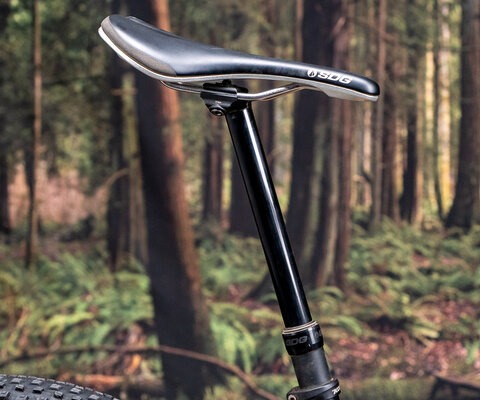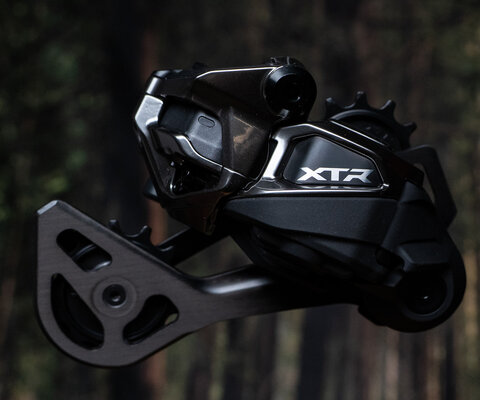2014 RockShox Pike RCT3 160mm Review
Rockshox’s Pike delivers big time in the recently booming, ever-developing “one-bike-conquers-all” category.
While old timers might remember the “Pike” name from forks of yesteryear, its current form is nearly unrecognizable from its modest XC predecessor. Instead, Rockshox has re-invented the Pike to be burly, light and stiff—tipping the scales at just over four pounds and boasting a completely revamped chassis and dampening system, it now resides in the top tiers of the all-mountain fork category. This recent re-invention definitely translates into better feel; not harsh, not super-squishy, but just right. We found our experience true to the advertisements—light, stiff, supple, and bottomless, even in the big hits. The new Pike is here to stay.
Design
Despite the Pike’s impressively low weigh-in, through 35mm stanchions and thoughtfully designed lowers the fork remains stiff and strong, shaving grams in less stress-prone areas like the damping side-lowers while adding material to high-stress zones like the brake mounts. Rockshox utilizes an extruded, highly durable bladder design, like those seen in the FOX Fit Cartridges and high-end moto forks—a process the company is particularly proud of, as it keeps all the bladders seamless and increases the lifespan of the damping unit. For those who want a lower-seated front end during ultra-steep climbs, the Pike boasts 30mm of adjustment. Spring rate for all Pikes can be tuned via “Bottomless Tokens” that are threaded into the bottom of the top cap. These plastic spacers are mechanic-friendly, and when stacked together increase the progressiveness of the fork.
The Charger damper (versus the Mission Control in the BoXXer and Lyrik) isn't the only major change in the Pike’s playbook. The crown is tapered, and the aluminum steerer assembly is light and durable. The new 15mm Maxle Lite system was a confidence-inspiring remake of its predecessor, an easy-to-use and very stable system. There were no worries of the system rattling loose or over-tightening the lever, resulting in damage. Our riders did chatter about a 20mm thru axle, but we did not feel that the Pike lacked any stiffness or rigidity. From top to bottom, we welcomed the Pike’s change in technology
Sag is easily set with markings on the right stanchion, and compression adjustments are conveniently located at the top of the right fork leg. The dial is large enough to reach while riding, offering full-open, pedal and lock settings. For low-speed compression damping and rebound, a red aluminum knob at the bottom of the same leg provides easy adjustment as well.
On the Trail
In all black, the Pike simply looks fast, and the hardened, anodized finish ensures its ride lives up to that first impression. Just push into the top of the fork’s stroke to notice how smooth it feels—no more sticky test push or “it’ll be better when I ride” mentality. The fork simply feels good, whether at the top, middle or bottom of the stroke.
We initially set up the fork 10 psi higher than recommended, and eventually backed it down to 75 psi—it was refreshing to find recommended air settings that were accurate. The smooth action was immediately evident in high-speed corners, where the compression and rebound were fully active. There was no diving into corners or unexpected rebounds when faced with trail clutter, and ultra-buttery feel for which we suspect the newly designed Charger system may be responsible. When pointed straight down, we found the Pike readily absorbed the big hits as well as the chatter. There were plenty of occasions where rider error was saved by the Pike’s full 160mm, and even when landing flat off a drop or jump we were unable to subject it to a harsh “bottom out” experienced by other similarly styled forks.
While we were quite impressed by how well it performed in all riding conditions, we also felt the Pike didn’t need to be adjusted when we decided to change up the style of the day’s abuse—with the low-speed compression at 6 of the 12 clicks and proper pressure settings dialed in, we were good to go, wherever that “go” took us. We did use the lockout system during long climbs or on transfers between race stages, a feature that proved true to its name, making the front end fully rigid with a simple flip of the switch—although, seeing as the Pike produced very little pedal bob, half the time we forgot to lock it out on road climbs. Pretty darn efficient.
Our Thoughts
The redesigned Pike was nothing short of stellar. In the design category, we felt the time-tested bladder system was a good move for Rockshox. The Maxle Lite system is more durable and easier to use than the previous version. The single lip seals and hard anodized coating delivered smooth, silky travel. As for the performance category, the Pike satisfied the masses. Whether you are racing on the pro enduro tour or a casual ripper, the Pike has you covered. The adjustability is rider-friendly and plentiful. The spring curve is comfortable at all speeds and rider ability. The damper is supple and durable. All this tied to a rigid chassis that does not sacrifice weight? Rockshox has just delivered a fork that sets its own benchmark.
RockShox Pike Solo Air RCT3 Details
Intended use: trail/all-mountain
Travel: 150/160mm
Wheel size: 26”, 27.5”, 29”
External adjustments: rebound, low-speed compression, pedal assist
35mm stanchions w/ black hard anodizing
Redesigned 15mm Maxle Lite
Colors: black, white
Weight: 1861g/4.10lbs
MSRP: $1,005 USD


